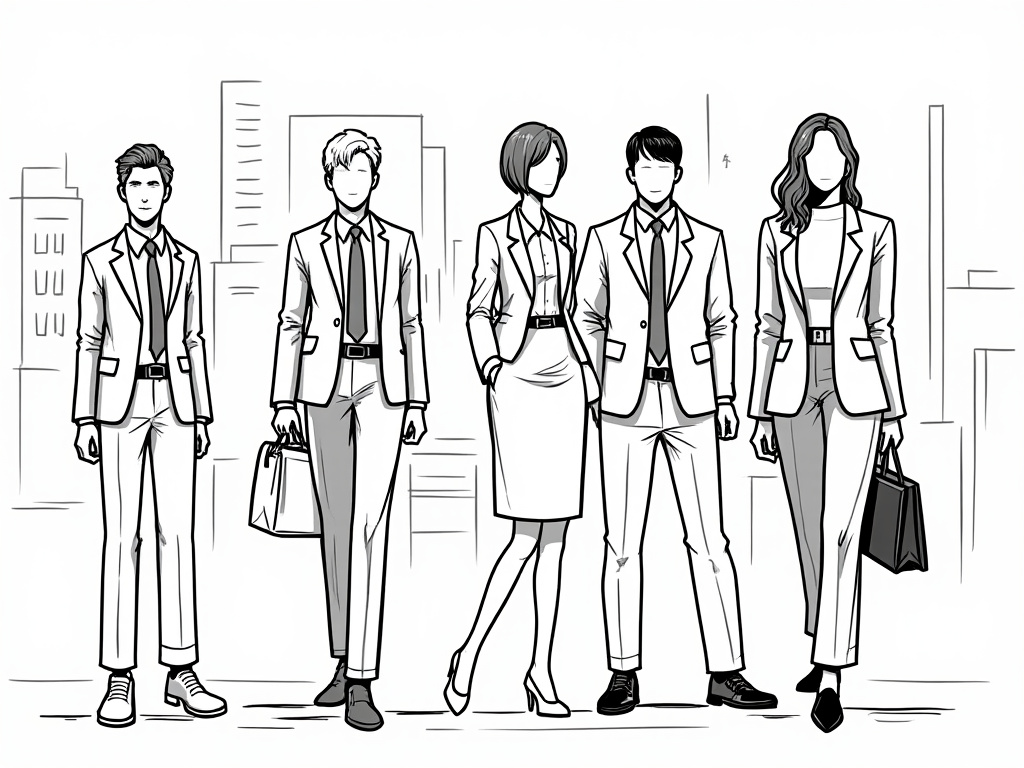
UAE School Uniforms: The Complete Guide to Rules, Styles, and Compliance
Reading time: 9 minutes
Table of Contents
- Introduction to UAE School Uniforms
- Official Regulations and Requirements
- Regional and School Type Variations
- Cultural Considerations and Adaptations
- Common Challenges and Solutions
- Shopping Guide and Maintenance Tips
- Frequently Asked Questions
- Evolving Beyond the Uniform: Future Trends
Introduction to UAE School Uniforms
Navigating the world of UAE school uniforms can feel like deciphering a complex code—especially for expatriate families newly arrived in the Emirates. You’ve likely wondered: “Why are some uniforms more formal than others?” or “How strictly are these dress codes actually enforced?”
Here’s the straight talk: School uniforms in the UAE aren’t just about looking neat—they’re deeply intertwined with the nation’s educational philosophy, cultural values, and even climate considerations. Since the UAE’s founding in 1971, uniforms have evolved from simple kanduras and abayas to sophisticated dress codes that reflect both tradition and modernity.
Let’s explore the fascinating landscape of UAE school uniforms from Abu Dhabi to Fujairah, covering everything from regulatory requirements to practical shopping advice for parents and students alike.
Official Regulations and Requirements
The UAE’s school uniform regulations operate on multiple levels, creating what might initially seem like a labyrinth of rules. However, once understood, the system reveals a thoughtful approach to educational attire.
Ministry of Education Guidelines
At the federal level, the Ministry of Education provides baseline guidelines that all schools must follow:
- Modesty requirements – Uniforms must adhere to standards of modesty appropriate for the UAE cultural context
- Identification elements – School logos must be clearly visible on uniforms
- Safety standards – Materials and designs must meet basic safety requirements
- National identity components – Public schools especially must incorporate elements that reflect UAE heritage
Dr. Amina Al Shamsi, Educational Policy Advisor at the UAE Ministry of Education, explains: “School uniforms serve as both a practical daily solution and a powerful symbol of national educational values. Our guidelines ensure these dual purposes are fulfilled while allowing schools to express their unique identity.”
Emirate-Specific Regulations
Each emirate maintains its own educational authority with the power to implement additional requirements:
| Emirate | Regulatory Body | Key Uniform Distinctions | Enforcement Level | Special Requirements |
|---|---|---|---|---|
| Abu Dhabi | ADEK | Most formal; strict color coding by grade level | Very High | Secondary students require blazers for formal events |
| Dubai | KHDA | Balance of traditional and modern elements | High | International schools have more flexibility |
| Sharjah | SPEA | Most conservative; emphasis on modesty | Very High | Strict gender-differentiated uniform policies |
| Ras Al Khaimah | RAK Education Zone | Practical adaptations for desert climate | Moderate | Special heat-appropriate fabric requirements |
| Fujairah | Fujairah Education Zone | Traditional elements with practical adaptations | Moderate | Regional color variations permitted |
Quick Scenario: Imagine your family relocating from Dubai to Sharjah mid-school year. Your child’s Dubai uniform likely wouldn’t meet Sharjah’s stricter modesty requirements, potentially requiring a complete uniform replacement—an expense and logistical challenge many expatriate families face when moving between emirates.
School-Level Implementation
Individual schools have substantial authority to design their specific uniform codes within the framework of ministry and emirate guidelines. This explains the striking visual differences between institutions, even those located minutes apart.
Schools typically enforce uniforms through:
- Daily uniform checks during morning assembly
- Disciplinary systems for non-compliance (typically warning-based)
- Parent-school communication regarding violations
- Annual uniform revisions announced before academic years
Regional and School Type Variations
UAE school uniforms vary dramatically across the educational landscape, influenced by school type, curriculum, and regional factors.
Public vs. Private School Distinctions
Public and private institutions represent two distinct uniform philosophies in the UAE:
Public Schools (Government Schools)
- Boys typically wear white kanduras (traditional Emirati garments) with ghutras (headdress)
- Girls wear modest dresses with hijabs in colors designating grade level (typically blue, green, or pink)
- Strong emphasis on traditional Emirati elements
- Limited variation across schools but color-coding by educational stage
- PE uniforms consist of track pants and t-shirts with school logos
Private Schools (Varying Curriculums)
- British curriculum schools often feature formal Western-style uniforms with ties, blazers, and pleated skirts
- American curriculum schools typically offer more casual options with polo shirts and khakis
- IB schools frequently balance formality with practicality, using smart-casual approaches
- Indian curriculum schools commonly use distinctive color schemes with churidars or pants
Case Study: Emirates National School in Abu Dhabi operates a dual-uniform system where Emirati students can choose between traditional national dress or the standard school uniform worn by expatriate students. This accommodates cultural preferences while maintaining institutional identity—a balancing act many premium schools now attempt.
UAE School Uniform Compliance Rates by School Type
Source: KHDA School Inspection Reports, 2022-2023
Uniform Elements by Educational Stage
As students progress through the UAE education system, their uniforms evolve to reflect increasing maturity:
Kindergarten/Foundation Stage (Ages 3-5)
- Emphasis on comfort and practicality
- Bright colors often used to engage young students
- Elastic waistbands and simple fastenings for developing motor skills
- Often includes hats for sun protection during outdoor play
Primary/Elementary (Ages 6-11)
- More structured uniforms introduced gradually
- Polo shirts commonly replace t-shirts
- Separate PE uniforms become standard
- House colors often incorporated for intra-school events
Secondary/Middle and High School (Ages 12-18)
- Formal appearance with business-like elements
- Ties and blazers often introduced (especially in British curriculum)
- Distinguished senior student variations (prefect badges, special ties)
- More gender-differentiated elements become apparent
Cultural Considerations and Adaptations
The UAE’s multicultural educational landscape necessitates thoughtful uniform policies that respect diverse cultural backgrounds while maintaining educational standards.
Faith and Modesty Accommodations
Most UAE schools demonstrate flexibility regarding religious observance:
- Hijab options – Muslim female students can typically wear hijabs matching uniform colors, regardless of curriculum type
- Length modifications – Skirts and dresses can often be lengthened upon request to accommodate modesty preferences
- Observant Sikh students – Accommodations for turbans that match school colors are generally permitted
- Religious jewelry – Small, discreet religious symbols are usually allowed if worn under uniforms
Maryam Al Mulla, Principal at Al Wasl International School in Dubai, notes: “We’ve developed a uniform approach that honors both UAE traditions and our diverse international student body. Our policy acknowledges that respectful cultural expression enhances rather than detracts from educational experiences.”
Climate Adaptations
The UAE’s harsh climate presents unique challenges for school uniform design:
- Summer-weight and winter-weight uniform variations
- Breathable fabrics prioritized (cotton blends dominate)
- UV-protective elements incorporated in outdoor PE uniforms
- Schools typically permit water bottles as unofficial uniform accessories
For expatriate families accustomed to four-season climates, the year-round heat can require rethinking uniform quantities. Unlike cooler countries where students might own 2-3 sets, UAE students typically need 4-5 complete sets to accommodate frequent laundering necessitated by the heat.
Common Challenges and Solutions
Even with clear guidelines, UAE school uniform compliance presents several recurring challenges for families and institutions.
Frequent Pain Points for Families
Availability and Sizing Issues
Many schools contract with specific suppliers, creating potential bottlenecks during peak purchasing seasons (typically August and early September). International sizing standards often don’t align perfectly with expectations from families’ home countries.
Solution: Purchase uniforms several months before the academic year when suppliers have full inventory. Consider buying one standard size and one slightly larger to accommodate growth during the school year.
Cost Concerns
Premium school uniforms can represent a significant expense, particularly for families with multiple children. Complete uniform sets for British curriculum secondary schools can cost 800-1,200 AED per child annually.
Solution: Many schools now operate second-hand uniform shops or exchange programs. Additionally, some banks offer “back to school” financing options with education packages.
Enforcement Inconsistencies
Parents often report confusion when uniform rules are enforced differently by various school staff members.
Solution: Request written uniform guidelines with visual examples from school administration. Create a checklist for children to reference when preparing for school.
School-Level Implementation Strategies
Progressive UAE schools have developed effective approaches to uniform management:
- Phased introductions – When uniform policies change, allowing 6-12 month transition periods
- Student input – Incorporating student council feedback in uniform revisions
- Parent committees – Engaging parent representatives in uniform decision processes
- Multiple supplier arrangements – Contracting with several vendors to prevent monopolistic pricing
Case Study: When GEMS Wellington International School revised its uniform in 2021, they created a student-parent committee to provide input. The result was a uniform with interchangeable elements that allowed personalization while maintaining the school’s visual identity. Compliance rates increased from 78% to 94% after implementation, demonstrating how inclusive design processes can improve acceptance.
Shopping Guide and Maintenance Tips
Navigating UAE uniform procurement requires strategic planning and local market knowledge.
Where to Purchase
Official School Suppliers
- Advantages: Guaranteed compliance, one-stop shopping
- Disadvantages: Limited shopping windows, potentially higher prices
- Most popular suppliers: Zaks Uniforms, Stitches, Threads, and Uniform Mart
Department Stores
- For generic elements like white shirts, navy trousers, etc.
- Recommended options: Marks & Spencer, Debenhams, and Carrefour
- Cost savings can be 30-40% on basic items
Online Options
- Emerging UAE-based uniform platforms like SchoolUniform.ae
- International options with delivery to UAE (shipping times vary)
- School-operated online shops (becoming increasingly common)
Pro Tip: Mark the uniform sale dates in your calendar as soon as schools announce them—typically 4-6 weeks before term starts. The best sizes disappear quickly, especially for popular schools.
Maintenance Best Practices
UAE’s climate and frequent washing can challenge uniform longevity. Consider these maintenance approaches:
- Pre-treatment: Soak new dark uniforms in vinegar water to set colors before first wash
- Washing: Use cold water cycles to prevent shrinkage in the intense UAE heat
- Drying: Avoid direct sunlight which can fade fabrics rapidly in desert conditions
- Labeling: Use iron-on name labels rather than marker pens which fade quickly with frequent washing
- Storage: Consider vacuum storage bags for seasonal uniform items to prevent humidity damage
Quick Longevity Hack: Reinforce buttons preemptively with clear nail polish—UAE school shirts typically lose buttons within 2-3 months without this treatment due to frequent washing.
Frequently Asked Questions
What happens if my child doesn’t wear the correct uniform?
Consequences vary by school but typically follow a graduated response system. First violations usually result in verbal reminders, followed by written notes to parents. Repeated violations may lead to meetings with administrators or counselors. In rare cases, particularly in senior grades at more traditional schools, students might be sent home to change. However, most schools maintain spare uniform elements for emergency situations.
Are there any days when uniforms aren’t required?
Most UAE schools designate specific non-uniform or “dress-down” days, often associated with charitable fundraising where students contribute a small amount (typically 5-10 AED) for the privilege of wearing casual clothes. National celebration days sometimes permit traditional clothing regardless of normal uniform policy. Finally, many schools have “house days” when students can wear house-colored t-shirts instead of regular uniforms. The annual schedule of these days is usually published in the school calendar.
How do UAE uniform requirements accommodate students with sensory sensitivities or special needs?
Increasingly, UAE schools recognize the challenges uniforms can pose for students with sensory processing issues or certain physical needs. Accommodations commonly available (usually requiring documentation from healthcare providers) include: tagless uniform options, alternative fabric choices for students with sensory sensitivities, adaptive closures replacing buttons or zippers, and uniform modifications for students with mobility devices. Most larger schools now have inclusion departments that can facilitate these accommodations through proper channels.
Evolving Beyond the Uniform: Future Trends and Adaptations
As the UAE education sector continues its rapid development, school uniform policies are evolving to reflect both technological advancement and changing social attitudes.
Several emerging trends are reshaping the future of UAE school uniforms:
- Tech-integrated elements – Some premium schools now incorporate RFID tracking in student IDs integrated with uniforms
- Sustainable materials – Eco-conscious fabric options becoming available at select institutions
- Gender-neutral options – Progressive schools offering uniform choices regardless of gender identity
- Performance fabrics – Athletic-inspired materials appearing in everyday uniforms, not just PE kits
- Cultural fusion – Design elements combining traditional Emirati aesthetics with contemporary global styles
Your child’s uniform experience in the UAE represents more than simply what they wear to school—it’s a daily intersection of practical education policy, cultural values, and community identity. By understanding both the requirements and unwritten norms surrounding UAE school uniforms, you’ll help your child navigate their educational journey with confidence and compliance.
What aspect of UAE school uniforms most surprised you when first encountering the system? Whether you’re a long-term resident or newly arrived, your experience contributes to the evolving tapestry of this uniquely Emirati educational tradition that balances heritage with innovation.
As Sheikh Zayed bin Sultan Al Nahyan wisely noted: “The real asset of any advanced nation is its people… and the prosperity and success of the people are measured by the standard of their education.” In the UAE, even school uniforms play their part in that educational standard—combining tradition, practicality, and increasingly, forward-thinking innovation.

Article reviewed by Arjun Patel, Fintech Analyst | Researching Digital Payment Trends in UAE, on May 15, 2025




